|
[1]
|
Whitman WB, Coleman DC, Wiebe WJ (1998) Prokaryotes: The unseen majority. Proc Natl Acad Sci USA 95: 6578–6583.
|
|
[2]
|
Flemming HC, Wingender J (2010) The biofilm matrix. Nat Rev Microbiol 8: 623–633.
|
|
[3]
|
Hall MR, McGillicuddy E, Kaplan LJ (2014) Biofilm: basic principles, pathophysiology, and implications for clinicians. Surg Infect (Larchmt ) 15: 1–7.
|
|
[4]
|
Hyman P, Abedon ST (2012) Smaller fleas: viruses of microorganisms. Scientifica 2012: 734023.
|
|
[5]
|
Wommack KE, Colwell RR (2000) Virioplankton: viruses in aquatic ecosystems. Microbiol Mol Biol Rev 64: 69–114.
|
|
[6]
|
Weinbauer MG (2004) Ecology of prokaryotic viruses. FEMS Microbiol Rev 28: 127–181.
|
|
[7]
|
Abedon ST (2015) Ecology of anti-biofilm agents I. antibiotics versus bacteriophages. Pharmaceuticals 8: 525–558.
|
|
[8]
|
Abedon ST (2015) Ecology of anti-biofilm agents II. bacteriophage exploitation and biocontrol of biofilm bacteria. Pharmaceuticals 8: 559–589.
|
|
[9]
|
Briandet R, Lacroix-Gueu P, Renault M, et al. (2008) Fluorescence correlation spectroscopy to study diffusion and reaction of bacteriophages inside biofilms. Appl Environ Microbiol 74: 2135–2143.
|
|
[10]
|
Fukuyo M, Sasaki A, Kobayashi I (2012) Success of a suicidal defense strategy against infection in a structured habitat. Sci Rep 2: 238.
|
|
[11]
|
Hyman P, Abedon ST (2010) Bacteriophage host range and bacterial resistance. Adv Appl Microbiol 70: 217–248.
|
|
[12]
|
Labrie SJ, Samson JE, Moineau S (2010) Bacteriophage resistance mechanisms. Nat Rev Microbiol 8: 317–327.
|
|
[13]
|
Dy RL, Richter C, Salmond GP, et al. (2014) Remarkable mechanisms in microbes to resist phage infections. Annu Rev Virol 1: 307–331.
|
|
[14]
|
Seed KD (2015) Battling phages: How bacteria defend against viral attack. PLoS Path 11: e1004847.
|
|
[15]
|
Parma DH, Snyder M, Sobolevski S, et al. (1992) The rex system of bacteriophage l: tolerance and altruistic cell death. Genes Dev 6: 497–510.
|
|
[16]
|
Shub DS (1994) Bacterial viruses. Bacterial altruism? Curr Biol 4: 555–556.
|
|
[17]
|
Dy RL, Przybilski R, Semeijn K, et al. (2014) A widespread bacteriophage abortive infection system functions through a Type IV toxin-antitoxin mechanism. Nucl Acids Res 42: 4590–4605.
|
|
[18]
|
Iranzo J, Lobkovsky AE, Wolf YI, et al. (2015) Immunity, suicide or both? Ecological determinants for the combined evolution of anti-pathogen defense systems. BMC Evol Biol 15: 43.
|
|
[19]
|
Dennehy JJ, Abedon ST, Turner PE (2007) Host density impacts relative fitness of bacteriophage f6 genotypes in structured habitats. Evolution 61: 2516–2527.
|
|
[20]
|
Abedon ST, Yin J (2008) Impact of spatial structure on phage population growth, In: Abedon, S.T. Editor, Bacteriophage Ecology, Cambridge, UK: Cambridge University Press, 94–113.
|
|
[21]
|
Abedon ST (2011) Bacteriophages and biofilms: ecology, phage therapy, plaques, Hauppauge, New York: Nova Science Publishers.
|
|
[22]
|
Abedon ST (2016) Bacteriophage exploitation of bacterial biofilms: phage preference for less mature targets? FEMS Microbiol Lett 363: fnv246.
|
|
[23]
|
Abedon ST (2012) Spatial vulnerability: bacterial arrangements, microcolonies, and biofilms as responses to low rather than high phage densities. Viruses 4: 663–687.
|
|
[24]
|
Abedon ST (2012) Thinking about microcolonies as phage targets. Bacteriophage 2: 200–204.
|
|
[25]
|
Abedon ST (2008) Phage population growth: constraints, games, adaptation, In: Abedon, S.T. Editor, Bacteriophage Ecology, Cambridge, UK: Cambridge University Press, 64–93.
|
|
[26]
|
Abedon ST (2009) Impact of phage properties on bacterial survival, In: Adams, H.T. Editor, Contemporary Trends in Bacteriophage Research, Hauppauge, New York: Nova Science Publishers, 217–235.
|
|
[27]
|
Payne RJH, Jansen VAA (2001) Understanding bacteriophage therapy as a density-dependent kinetic process. J Theor Biol 208: 37–48.
|
|
[28]
|
Abedon ST, Thomas-Abedon C (2010) Phage therapy pharmacology. Curr Pharm Biotechnol 11: 28–47.
|
|
[29]
|
Hamilton WD (1964) The genetical evolution of social behaviour. I. J Theor Biol 7: 1–16.
|
|
[30]
|
West SA, Gardner A (2010) Altruism, spite, and greenbeards. Science 327: 1341–1344.
|
|
[31]
|
Iranzo J, Lobkovsky AE, Wolf YI, et al. (2014) Virus-host arms race at the joint origin of multicellularity and programmed cell death. Cell Cycle 13: 3083–3088.
|
|
[32]
|
West SA, Griffin AS, Gardner A, et al. (2006) Social evolution theory for microorganisms. Nat Rev Microbiol 4: 597–607.
|
|
[33]
|
Ewald PW (1994) Evolution of Infectious Disease, New York: Oxford University Press.
|
|
[34]
|
Michod RE, Nedelcu AM, Roze D (2003) Cooperation and conflict in the evolution of individuality. IV. Conflict mediation and evolvability in Volvox carteri. Bio Systems 69: 95–114.
|
|
[35]
|
van Gestel J, Vlamakis H, Kolter R (2015) Division of labor in biofilms: the ecology of cell differentiation. Microbiol Spectr 3: MB-0002-2014.
|
|
[36]
|
Andrews JH (1998) Bacteria as modular organisms. Ann Rev Microbiol 52: 105–126.
|
|
[37]
|
Kaplan JB (2010) Biofilm dispersal: mechanisms, clinical implications, and potential therapeutic uses. J Dent Res 89: 205–218.
|
|
[38]
|
McDougald D, Rice SA, Barraud N, et al. (2012) Should we stay or should we go: mechanisms and ecological consequences for biofilm dispersal. Nat Rev Microbiol 10: 39–50.
|
|
[39]
|
Davies DG (2011) Biofilm disperson, In: Flemming, H.C., Wingender, J., Szewzyk, U. Editors, Biofilm Highlights, Berlin: Springer, 1–28.
|
|
[40]
|
Barraud N, Kjelleberg S, Rice SA (2015) Dispersal from microbial biofilms. Microbiol Spectr 3: MB-0015-2014.
|
|
[41]
|
Petrova OE, Sauer K (2016) Escaping the biofilm in more than one way: desorption, detachment or dispersion. Curr Opin Microbiol 30: 67–78.
|
|
[42]
|
Kim SK, Lee JH (2016) Biofilm dispersion in Pseudomonas aeruginosa. J Microbiol 54: 71–85.
|
|
[43]
|
Ronce O (2007) How does it feel to be like a rolling stone? Ten questions about dispersal evolution. Ann Rev Ecol Evol Syst 38: 231–253.
|
|
[44]
|
Korber DR, Lawrence JR, Lappin-Scott HM, et al. (1995) Growth of microorganisms on surfaces, In: Costerton, J.W., Lappin-Scott, H. Editors, Microbial biofilms, Cambridge, UK: Cambridge University Press, 15–45.
|
|
[45]
|
Bjarnsholt T (2013) The role of bacterial biofilms in chronic infections. Apmis 121: 1–51.
|
|
[46]
|
Battin TJ, Besemer K, Bengtsson MM, et al. (2016) The ecology and biogeochemistry of stream biofilms. Nat Rev Microbiol 14: 251–263.
|
|
[47]
|
Costerton JW, Lappin-Scott H (1995) Introduction to microbial biofilms, In: Costerton, J.W., Lappin-Scott, H. Editors, Microbial biofilms, Cambridge, UK: Cambridge University Press, 1–11.
|
|
[48]
|
Costerton JW, Marrie TJ, Cheng KJ (1985) Phenomena of bacterial adhesion, In: Savage, D.C., Fletcher, M. Editors, Bacterial Adhesion: Mechanisms and Physiological Significance, New York: Plenum Press, 3–43.
|
|
[49]
|
Somerville DA, Noble WC (1973) Microcolony size of microbes on human skin. J Med Microbiol 6: 323–328.
|
|
[50]
|
Mitarai N, Brown S, Sneppen K (2016) Population dynamics of phage and bacteria in spatially structured habitats using phage l and Escherichia coli. J Bacteriol 198: 1783–1793.
|
|
[51]
|
Kreft JU (2004) Biofilms promote altruism. Microbiology 150: 2751–2760.
|
|
[52]
|
Nadell CD, Bassler BL (2011) A fitness trade-off between local competition and dispersal in Vibrio cholerae biofilms. Proc Natl Acad Sci USA 108: 14181–14185.
|
|
[53]
|
Bryers JD (1988) Modeling biofilm accumulation, In: Brazin, M.J., Prosser, J.I. Editors, Physiological Models in Microbiology, Eds., FL: CRC Press, 109–144.
|
|
[54]
|
Garny K, Horn H, Neu TR (2008) Interaction between biofilm development, structure and detachment in rotating annular reactors. Bioprocess Biosyst Eng 31: 619–629.
|
|
[55]
|
Brading MG, Jass J, Lappin-Scott HM (1995) Dynamics of bacterial biofilm formation, In: Costerton, J.W., Lappin-Scott, H. Editors, Microbial biofilms, Cambridge, UK: Cambridge University Press, 46–63.
|
|
[56]
|
Vanysacker L, Boerjan B, Declerck P, et al. (2014) Biofouling ecology as a means to better understand membrane biofouling. Appl Microbiol Biotechnol 98: 8047–8072.
|
|
[57]
|
Bester E, Wolfaardt G, Joubert L, et al. (2005) Planktonic-cell yield of a pseudomonad biofilm. Appl Environ Microbiol 71: 7792–7798.
|
|
[58]
|
Knowles B, Silveira CB, Bailey BA, et al. (2016) Lytic to temperate switching of viral communities. Nature 531: 466–470.
|
|
[59]
|
Gonzalez S, Fernandez L, Campelo AB, et al. (2017) The behavior of Staphylococcus aureus dual-species biofilms treated with bacteriophage phiIPLA-RODI depends on the accompanying microorganism. Appl Environ Microbiol 83: AEM-02821-16.
|
|
[60]
|
Sutherland IW, Hughes KA, Skillman LC, et al. (2004) The interaction of phage and biofilms. FEMS Microbiol Lett 232: 1–6.
|
|
[61]
|
Nale JY, Chutia M, Carr P, et al. (2016) "Get in early"; biofilm and wax moth (Galleria mellonella) models reveal new insights into the therapeutic potential of Clostridium difficile bacteriophages. Front Microbiol 7: 1383.
|
|
[62]
|
Doolittle MM, Cooney JJ, Caldwell DE (1996) Tracing the interaction of bacteriophage with bacterial biofilms using fluorescent and chromogenic probes. J Indust Microbiol 16: 331–341.
|
|
[63]
|
Abedon ST (1992) Lysis of lysis inhibited bacteriophage T4-infected cells. J Bacteriol 174: 8073–8080.
|
|
[64]
|
Abedon ST (1989) Selection for bacteriophage latent period length by bacterial density: A theoretical examination. Microb Ecol 18: 79–88.
|
|
[65]
|
Wang IN, Dykhuizen DE, Slobodkin LB (1996) The evolution of phage lysis timing. Evol Ecol 10: 545–558.
|
|
[66]
|
Hadas H, Einav M, Fishov I, et al. (1997) Bacteriophage T4 development depends on the physiology of its host Escherichia coli. Microbiology 143: 179–185.
|
|
[67]
|
Abedon ST (2012) Bacterial "immunity" against bacteriophages. Bacteriophage 2: 50–54.
|
|
[68]
|
Koonin EV, Zhang F (2017) Coupling immunity and programmed cell suicide in prokaryotes: Life-or-death choices. BioEssays 39: 1–9.
|
|
[69]
|
Hoyland-Kroghsbo NM, Paczkowski J, Mukherjee S, et al. (2017) Quorum sensing controls the Pseudomonas aeruginosa CRISPR-Cas adaptive immune system. Proc Natl Acad Sci USA 114: 131–135.
|
|
[70]
|
Goldfarb T, Sberro H, Weinstock E, et al. (2015) BREX is a novel phage resistance system widespread in microbial genomes. EMBO J 34: 169–183.
|
|
[71]
|
Abedon ST (2015) Bacteriophage secondary infection. Virol Sin 30: 3–10.
|
|
[72]
|
McLean RJ, Corbin BD, Balzer GJ, et al. (2001) Phenotype characterization of genetically defined microorganisms and growth of bacteriophage in biofilms. Meth Enzymol 336: 163–174.
|
|
[73]
|
Azeredo J, Sutherland IW (2008) The use of phages for the removal of infectious biofilms. Curr Pharm Biotechnol 9: 261–266.
|
|
[74]
|
Sillankorva S, Azeredo J (2014) The use of bacteriophages and bacteriophage-derived enzymes for clinically relevant biofilm control, In: Borysowski, J., Miedzybrodzki, R., Górski, A. Editors, Phage Therapy: Current Research and Applications, Norfolk, UK: Caister Academic Press, 305–325.
|
|
[75]
|
Kutter E, Kellenberger E, Carlson K, et al. (1994) Effects of bacterial growth conditions and physiology on T4 infection, In: Karam, J.D., Kutter, E., Carlson, K., Guttman, B. Editors, The Molecular Biology of Bacteriophage T4, Washington, DC: ASM Press, 406–418.
|
|
[76]
|
Miller RV, Day M (2008) Contribution of lysogeny, pseudolysogeny, and starvation to phage ecology, In: Abedon, S.T. Editor, Bacteriophage Ecology, Cambridge, UK: Cambridge University Press, 114–143.
|
|
[77]
|
Pearl S, Gabay C, Kishony R, et al. (2008) Nongenetic individuality in the host-phage interaction. PLoS Biol 6: e120.
|
|
[78]
|
Abedon ST (2009) Disambiguating bacteriophage pseudolysogeny: an historical analysis of lysogeny, pseudolysogeny, and the phage carrier state, In: Adams, H.T. Editor, Contemporary Trends in Bacteriophage Research, Hauppauge, New York: Nova Science Publishers, 285–307.
|
|
[79]
|
Los M, Wegrzyn G (2012) Pseudolysogeny. Adv Virus Res 82: 339–349.
|
|
[80]
|
Golec P, Karczewska-Golec J, Los M, et al. (2014) Bacteriophage T4 can produce progeny virions in extremely slowly growing Escherichia coli host: comparison of a mathematical model with the experimental data. FEMS Microbiol Lett 351: 156–161.
|
|
[81]
|
Harper DR, Parracho HMR, Walker J, et al. (2014) Bacteriophages and biofilms. Antibiotics 3: 270–284.
|
|
[82]
|
Bryan D, el-Shibiny A, Hobbs Z, et al. (2016) Bacteriophage T4 infection of stationary phase E. coli: life after log from a phage perspective. Front Microbiol 7: 1391.
|
|
[83]
|
Yin J (1991) A quantifiable phenotype of viral propagation. Biochem Biophys Res Com 174: 1009–1014.
|
|
[84]
|
Filippini M, Buesing N, Bettarel Y, et al. (2006) Infection paradox: high abundance but low impact of freshwater benthic viruses. Appl Environ Microbiol 72: 4893–4898.
|
|
[85]
|
Wilkinson JF (1958) The extracellualr polysaccharides of bacteria. Bacteriol Rev 22: 46–73.
|
|
[86]
|
van Benthum WAJ, van Loosdrecht MCM, Tijhuis L, et al. (1995) Solids retention time in heterotrophic and nitrifying biofilms in a biofilm airlift suspension reactor. Water Sci Technol 32: 35–43.
|
|
[87]
|
Reichert P, Wanner O (1997) Movement of solids in biofilms-significance of liquid phase transport. Water Sci Technol 36: 321–328.
|
|
[88]
|
Davey ME, O'Toole GA (2000) Microbial biofilms: from ecology to molecular genetics. Microbiol Mol Biol Rev 64: 847–867.
|
|
[89]
|
Hanlon GW, Denyer SP, Olliff CJ, et al. (2001) Reduction in exopolysaccharide viscosity as an aid to bacteriophage penetration through Pseudomonas aeruginosa biofilms. Appl Environ Microbiol 67: 2746–2753.
|
|
[90]
|
Resch A, Fehrenbacher B, Eisele K, et al. (2005) Phage release from biofilm and planktonic Staphylococcus aureus cells. FEMS Microbiol Lett 252: 89–96.
|
|
[91]
|
Forde A, Fitzgerald GF (2003) Molecular organization of exopolysaccharide (EPS) encoding genes on the lactococcal bacteriophage adsorption blocking plasmid, pCI658. Plasmid 49: 130–142.
|
|
[92]
|
Flood JA, Ashbolt NJ (2000) Virus-sized particles can be entrapped and concentrated one hundred fold within wetland biofilms. Adv Environ Res 3: 403–411.
|
|
[93]
|
Storey MV, Ashbolt NJ (2001) Persistence of two model enteric viruses (B40-8 and MS-2 bacteriophages) in water distribution pipe biofilms. Water Sci Technol 43: 133–138.
|
|
[94]
|
Lacroix-Gueu P, Briandet R, Lévêque-Fort S, et al. (2005) In situ measurements of viral particles diffusion inside mucoid biofilms. C R Biol 328: 1065–1072.
|
|
[95]
|
Brüssow H (2013) Bacteriophage-host interaction: from splendid isolation into a messy reality. Curr Opin Microbiol 16: 500–506.
|
|
[96]
|
Fan X, Li W, Zheng F, et al. (2013) Bacteriophage inspired antibiotics discovery against infection involved biofilm. Crit Rev Eukaryot Gene Expr 23: 317–326.
|
|
[97]
|
Parasion S, Kwiatek M, Gryko R, et al. (2014) Bacteriophages as an alternative strategy for fighting biofilm development. Pol J Microbiol 63: 137–145.
|
|
[98]
|
Chan BK, Abedon ST (2015) Bacteriophages and their enzymes in biofilm control. Curr Pharm Des 21: 85–99.
|
|
[99]
|
Gutierrez D, Rodriguez-Rubio L, Martinez B, et al. (2016) Bacteriophages as weapons against bacterial biofilms in the food industry. Front Microbiol 7: 825.
|
|
[100]
|
Khalifa L, Shlezinger M, Beyth S, et al. (2016) Phage therapy against Enterococcus faecalis in dental root canals. J Oral Microbiol 8: 32157.
|
|
[101]
|
Motlagh AM, Bhattacharjee AS, Goel R (2016) Biofilm control with natural and genetically-modified phages. World J Microbiol Biotechnol 32: 67.
|
|
[102]
|
Abedon ST (2014) Phage therapy: eco-physiological pharmacology. Scientifica 2014: 581639.
|
|
[103]
|
Arber W, Linn S (1969) DNA modification and restriction. Annu Rev Biochem 38: 467–500.
|
|
[104]
|
Korona R, Levin BR (1993) Phage-mediated selection and the evolution and maintenance of restriction-modification. Evolution 47: 556–575.
|
|
[105]
|
Chao L, Levin BR, Stewart FM (1977) A complex community in a simple habitat: an experimental study with bacteria and phage. Ecology 58: 369–378.
|
|
[106]
|
Bohannan BJM, Travisano M, Lenski RE (1999) Epistatic interactions can lower the cost of resistance to multiple consumers. Evolution 53: 292–295.
|
|
[107]
|
Hill C (1993) Bacteriophage and bacteriophage resistance in lactic acid bacteria. FEMS Microbiol Rev 12: 87–108.
|
|
[108]
|
Nissen SB, Magidson T, Gross K, et al. (2016) Publication bias and the canonization of false facts. eLife 5: e21451.
|
|
[109]
|
Costerton JW, Cheng JJ, Geesey GG, et al. (1987) Bacterial biofilms in nature and disease. Ann Rev Microbiol 41: 435–464.
|
|
[110]
|
Oh YJ, Jo W, Yang Y, et al. (2007) Influence of culture conditions on Escherichia coli O157:H7 biofilm formation by atomic force microscopy. Ultramicroscopy 107: 869–874.
|
|
[111]
|
Cheng KJ, Costerton JW (1980) The formation of microcolonies by rumen bacteria. Can J Microbiol 26: 1104–1113.
|
|
[112]
|
Lacqua A, Wanner O, Colangelo T, et al. (2006) Emergence of biofilm-forming subpopulations upon exposure of Escherichia coli to environmental bacteriophages. Appl Environ Microbiol 72: 956–959.
|
|
[113]
|
Shen Y, Mitchell MS, Donovan DM, et al. (2012) Phage-based enzybiotics, In: Hyman, P., Abedon, S.T. Editors, Bacteriophages in Health and Disease, Wallingford, UK: CABI Press, 217–239.
|
|
[114]
|
Yan J, Mao J, Xie J (2014) Bacteriophage polysaccharide depolymerases and biomedical applications. BioDrugs 28: 265–274.
|
|
[115]
|
Gutiérrez D, Briers Y, Rodríguez-Rubio L, et al. (2015) Role of the pre-neck appendage protein (Dpo7) from phage vB_SepiS-phiIPLA7 as an anti-biofilm agent in staphylococcal species. Front Microbiol 6: 1315.
|
|
[116]
|
Pires DP, Oliveira H, Melo LD, et al. (2016) Bacteriophage-encoded depolymerases: their diversity and biotechnological applications. Appl Microbiol Biotechnol 100: 2141–2151.
|
|
[117]
|
Westra ER, van HS, Oyesiku-Blakemore S, et al. (2015) Parasite exposure drives selective evolution of constitutive versus inducible defense. Curr Biol 25: 1043–1049.
|
|
[118]
|
Berngruber TW, Lion S, Gandon S (2013) Evolution of suicide as a defence strategy against pathogens in a spatially structured environment. Ecol Lett 16: 446–453.
|
|
[119]
|
Refardt D, Kummerli R (2013) Defying bacteriophages: contrasting altruistic with individual-based resistance mechanisms in Escherichia coli. Commun Integr Biol 6: e25159.
|
|
[120]
|
Heilmann S, Sneppen K, Krishna S (2012) Coexistence of phage and bacteria on the boundary of self-organized refuges. Proc Natl Acad Sci USA 109: 12828–12833.
|
|
[121]
|
Abedon ST, Kuhl SJ, Blasdel BG, et al. (2011) Phage treatment of human infections. Bacteriophage 1: 66–85.
|
|
[122]
|
Borysowski J, Miedzybrodzki R, Górski A (2014) Phage Therapy: Current Research and Applications, Norfolk, UK: Caister Academic Press.
|
|
[123]
|
Scali C, Kunimoto B (2013) An update on chronic wounds and the role of biofilms. J Cutan Med Surg 17: 371–376.
|
|
[124]
|
Cooper RA, Bjarnsholt T, Alhede M (2014) Biofilms in wounds: a review of present knowledge. J Wound Care 23: 570–580.
|
|
[125]
|
Macia MD, Rojo-Molinero E, Oliver A (2014) Antimicrobial susceptibility testing in biofilm-growing bacteria. Clin Microbiol Infect 20: 981–990.
|
|
[126]
|
Abedon ST (2015) Phage therapy of pulmonary infections. Bacteriophage 5: e1020260.
|
|
[127]
|
Fish R, Kutter E, Wheat G, et al. (2016) Bacteriophage treatment of intransigent diabetic toe ulcers: a case series. J Wound Care 25: S27–S33.
|
|
[128]
|
Abedon ST (2017) Bacteriophage clinical use as antibactertial "drugs": utility precident. Microbiol Spectr.
|
|
[129]
|
Stewart PS, Franklin MJ (2008) Physiological heterogeneity in biofilms. Nat Rev Microbiol 6: 199–210.
|
|
[130]
|
Davis KM, Mohammadi S, Isberg RR (2015) Community behavior and spatial regulation within a bacterial microcolony in deep tissue sites serves to protect against host attack. Cell Host Microbe 17: 21–31.
|
|
[131]
|
Harmsen M, Yang L, Pamp SJ, et al. (2010) An update on Pseudomonas aeruginosa biofilm formation, tolerance, and dispersal. FEMS Immunol Med Microbiol 59: 253–268.
|
|
[132]
|
Purevdorj-Gage B, Costerton WJ, Stoodley P (2005) Phenotypic differentiation and seeding dispersal in non-mucoid and mucoid Pseudomonas aeruginosa biofilms. Microbiology 151: 1569–1576.
|
|
[133]
|
Hamilton WA (1987) Biofilms: microbial interactions and metabolic activities, In: Fletcher, M., Gray, T.R.G., Jones, J.G. Editors, Ecology of Microbial Communities, Cambridge: Cambridge University Press, 361–385.
|
|
[134]
|
Abedon ST, Herschler TD, Stopar D (2001) Bacteriophage latent-period evolution as a response to resource availability. Appl Environ Microbiol 67: 4233–4241.
|
|
[135]
|
Levin BR, Bull JJ (2004) Population and evolutionary dynamics of phage therapy. Nat Rev Microbiol 2: 166–173.
|
|
[136]
|
Gill JJ (2008) Modeling of bacteriophage therapy, In: Abedon, S.T. Editor, Bacteriophage Ecology, Cambridge, UK: Cambridge University Press, 439–464.
|
|
[137]
|
Stent GS (1963) Molecular Biology of Bacterial Viruses, San Francisco, CA: WH Freeman and Co.
|
|
[138]
|
Gallet R, Shao Y, Wang IN (2009) High adsorption rate is detrimental to bacteriophage fitness in a biofilm-like environment. BMC Evol Biol 9: 241.
|
|
[139]
|
Yin J, McCaskill JS (1992) Replication of viruses in a growing plaque: a reaction-diffusion model. Biophys J 61: 1540–1549.
|
|
[140]
|
Abedon ST, Culler RR (2007) Bacteriophage evolution given spatial constraint. J Theor Biol 248: 111–119.
|
|
[141]
|
Hewson I, Fuhrman JA (2003) Viriobenthos production and virioplankton sorptive scavenging. Microb Ecol 46: 337–347.
|
|
[142]
|
Hoyland-Kroghsbo NM, Maerkedahl RB, Svenningsen SL (2013) A quorum-sensing-induced bacteriophage defense mechanism. MBio 4: e00362.
|
|
[143]
|
Boots M, Mealor M (2007) Local interactions select for lower pathogen infectivity. Science 315: 1284–1286.
|
|
[144]
|
Abedon ST (2016) Commentary: phage therapy of staphylococcal chronic osteomyelitis in experimental animal model. Front Microbiol 7: 1251.
|
|
[145]
|
Kutter E, De Vos D, Gvasalia G, et al. (2010) Phage therapy in clinical practice: treatment of human infections. Curr Pharm Biotechnol 11: 69–86.
|
|
[146]
|
Hyman P, Abedon ST (2009) Practical methods for determining phage growth parameters. Meth Mol Biol 501: 175–202.
|
|
[147]
|
Mirzaei MK, Nilsson AS (2015) Isolation of phages for phage therapy: a comparison of spot tests and efficiency of plating analyses for determination of host range and efficacy. PLoS One 10: e0118557.
|
|
[148]
|
Abedon ST (2014) Bacteriophages as drugs: the pharmacology of phage therapy, In: Borysowski, J., Miedzybrodzki, R., Górski, A. Editors, Phage Therapy: Current Research and Applications, Norfolk, UK: Caister Academic Press, 69–100.
|













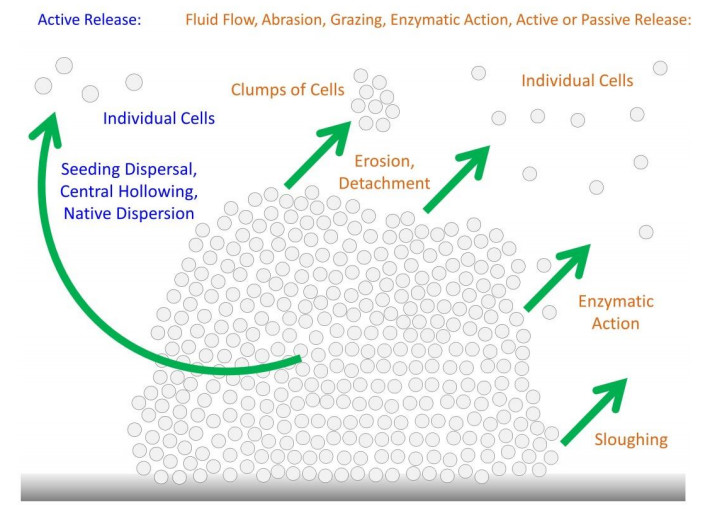
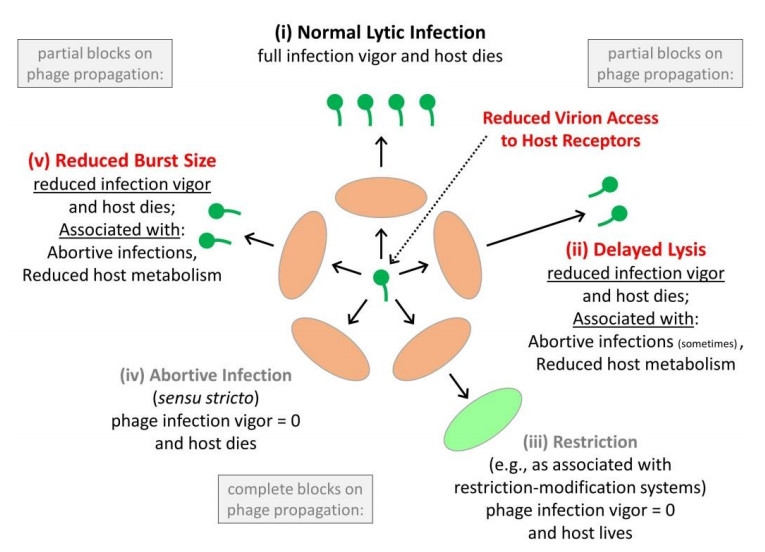
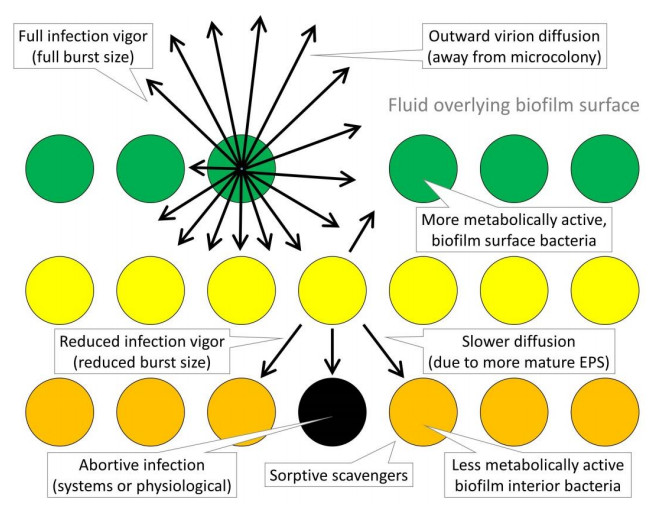
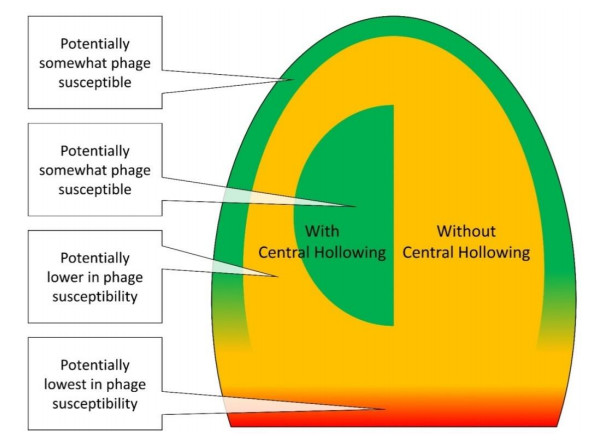
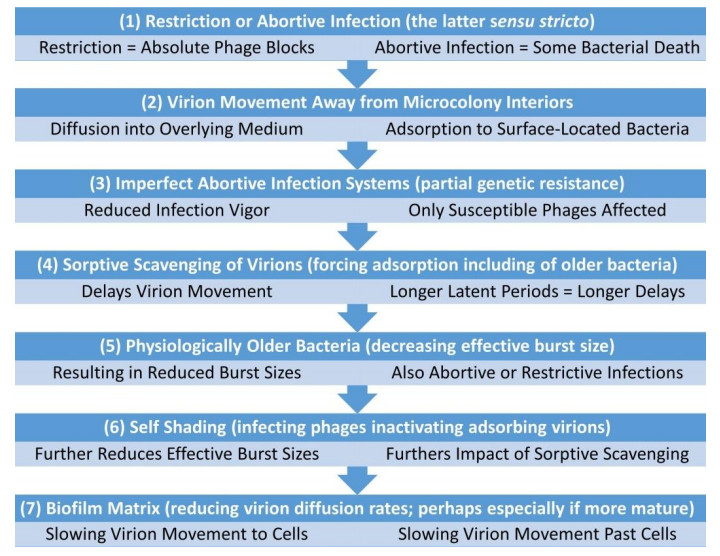


 DownLoad:
DownLoad: